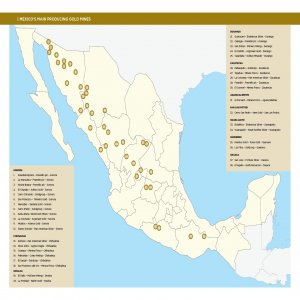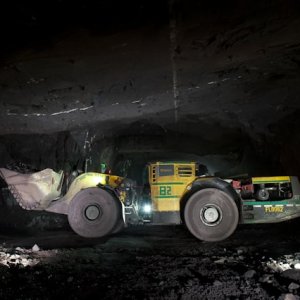Improving the Efficiency of Lixiviation Systems

STORY INLINE POST
Lixiviation, also commonly known as heap leaching, is a tried and tested mining technique enabling the processing of different kinds of ores under economically viable conditions. The use of lixiviation in mining is widespread due to the occurrence of minerals with low gold and copper grades and the current metal prices. “The price of metals currently allows disseminated deposits to be processed to maximize production at a mine site,” states Francisco Morales Melendrez, Director General of PROFUMISA. “The metals are extracted using cyanide in the case of gold, and sulfuric acid in the case of copper. Through these leaching solutions, metal ions are extracted and transported in a pregnant lixiviation solution (PLS).” The PLS is then transported for further processing and recovery of the metals through electrowinning, in the case of copper, and through Merrill-Crowe or ADR (adsorption, desorption, recovery) processes in the case of gold.
Morales Melendrez’s PROFUMISA was founded in 2001 with the objective of supplying the mining industry with all the necessary supplies and services for lixiviation systems. The company works together with the mines’ operations teams to optimize the efficiency of these systems. A mine’s operations team informs PROFUMISA of the flow rate and quantity of fluids that they need transported through the lixiviation system’s ducts. While the design of the leach pads is generally done by the mining company or a contractor, PROFUMISA takes care of installing the irrigation systems, following the technical and material requirements of the mine. The systems themselves can vary according to the technology employed and the capital that mining company is willing to invest. Nevertheless, the system will always be designed according to the flow needs of the mine, and accessories can be added as the operations progress. In recent years, the company has been trying to convince mining companies to install drip irrigation systems instead of aspersion systems. “At the moment, companies are using both methods, but the method they choose to implement depends largely on the operation managers. Many managers are used to the aspersion method, which is why it is so common in Mexico,” Morales Melendrez adds.
Drip systems generally lessen the environmental impact, manage lower pressures, and reduce the consumption of electricity. Furthermore, the drip method helps to maintain control over the process and humidity of the leach pads, allowing for better control over the permeability and ensuring the uniformity in the velocity of infiltration. Even so, the drip method requires more time to install and tends to be more susceptible to blockage by the solutions managed, which are rarely filtered and usually contain suspended solids and/or organic compounds. The aspersion method system typically has larger openings at the mouthpieces which reduces the risk of blockage.
PROFUMISA works to improve the safety and efficiency of lixiviation systems through training courses and consulting. “We offer courses to the mine staff about the management of irrigation systems and leach pads, and the proper use of leaching solutions,” states Morales Melendrez. The company makes sure to put an emphasis on the behavior and safety protocols that must be followed around the leach pads. For example, Morales Melendrez says that pressures within the system must never exceed 60psi and companies must always use pipes that can handle pressures of at least 120psi. In order to optimize the lixiviation systems, PROFUMISA recommends a series of studies and monitoring of variables. “Generally, companies carry out rock and mineral studies before installing an irrigation system for lixiviation. This is because the velocity of infiltration depends largely on the size distribution of grains, the composition of minerals, and humidity transport. The ideal situation is to reach a uniform level of humidity so that the solution is transported horizontally and percolates down to be collected at the base of the leach pad,” Morales Melendrez explains. He adds that it is necessary to carry out chemical tests to quantify the amount and type of valuable minerals, design the ideal flow rate, and identify the correct concentration of leaching solution. Other important aspects of keeping the efficiency of an irrigation system are monitoring and maintenance. Since the irrigation system runs as a closed system, the mine staff must make sure that fresh water is fed into the system to replace the water that evaporates or is lost during processing; the cyanide and sulfuric acid can be reutilized after the recovery of the metal. PROFUMISA imparts courses on how to maintain lixiviation systems to remove suspended solids from the leaching solution and avoid blocking of the mouthpieces. The courses also cover the management of the material in the leach pads to allow for an efficient percolation of the solutions. These procedures are meant to reduce the risk of accidents around leach pads. To avoid leaks, Morales Melendrez also always suggests lining the canals through which the pipes pass so that any leak may be contained and transported towards the plant. Through these measures, mining companies can improve the efficiency of lixiviation systems and obtain better recovery of metals.






















